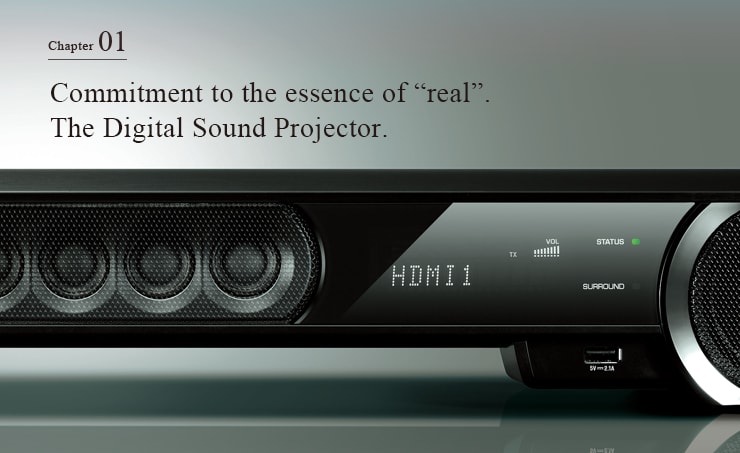Commitment to the essence of "real".
- Chapter 01
Commitment to the essence of “real”. - Chapter 02
The secret story of the YSP series development. - Chapter 03
The sound quality and realism achieved by the YSP series. - Chapter 04
An Evolutionary History of the YSP Series
All About YSP
A new concept: "Wall Reflected Sound"
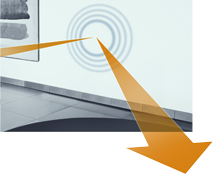
Installed near the TV and allowing viewers to enjoy vividly realistic sound with ease, the sound bar surround sound system is now a common presence. Within the field of realistic surround sound technology, two different types of systems exist.
One, the virtual surround system, takes advantage of the human aural system’s ability to split sound into front, back, left and right, using the front left and right speakers to create the impression synthetically via digital processing that sound is also emanating from behind the listener. Many sound bar systems worldwide have adopted this type of technology.
In contrast, YSP utilizes multiple speakers to produce beams of sound reflected off walls, achieving real 5.1ch and 7.1ch sound with just a single unit. This entirely new concept resulted in Yamaha’s unique Digital Sound Projector technology, allowing high fidelity reproduction of surround sound effects.
Virtual Surround Sound
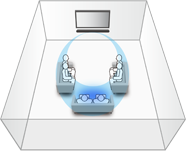
Synthetically creating the sensation that sound comes from behind the listener.
Digital Sound Projector
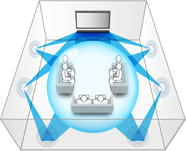
Reflecting beams of sound off walls to produce sound that actually comes from behind the listener.
Precise timing control of multiple speakers.
Multi-channel sound field production with one unit.
The basis of Digital Sound Projector technology is comprised of two elements: multiple small-diameter speakers arranged side-by-side in a lateral array and the use of digital signal processing to precisely control the timing of the sound from the array. If a sound is produced simultaneously by multiple speakers in a lateral array, the sound waves emitted by each overlap create strong directional waves. These directional sound waves are the beams of sound.
Shifting the timing of the sound from each speaker then generates the capability of orienting the beams. YSP makes use of this principle, precisely controlling five sound beams with highly accurate digital signal control and using the beams’ emission and reflection from wall surfaces to produce a realistic sonic field with sound that truly comes from left, right and behind.
How Digital Sound Projector technology produces sound beams.
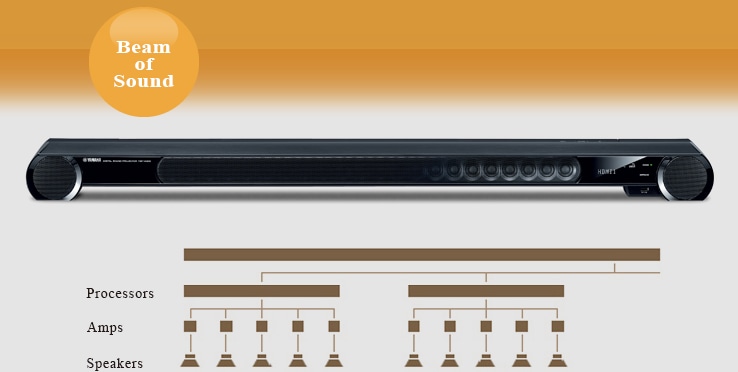
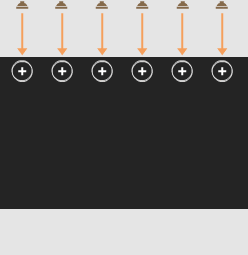
Sound waves overlap to produce one strong wave: a beam of sound.
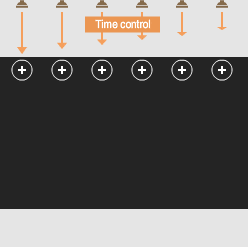
Adjusting the timing of the sound from each speaker gives control over the beam’s direction.
Fusion of digital and analog technology. Sound quality
tuning and circuit design only Yamaha can produce.
Advanced digital signal processing technology is absolutely essential for the YSP series to achieve multi-channel surround sound with sound beams. But that by itself is not enough to produce a high quality surround sound field. Generally, improving the degree of surround sound perfection is dealt with in the digital processing realm and the question of sound quality handled at the level of the speakers, but YSP is different. In YSP, increasing the performance of the speaker array itself results in a synergistic improvement of the surround sound field effect.
In its speaker development to date, including the development of small diameter speakers, which unlike most small speakers can produce a wide frequency range, and amplifier circuits capable of independently driving large numbers of speakers, Yamaha has brought all of its dedicated LSI development technology and expertise into play.
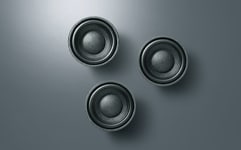
Array speakers
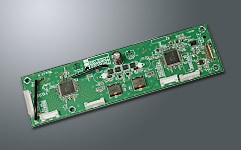
Amp circuit board
A different dimension of real,
ambient and sweet spot sound.
The greatest advantage of the Digital Sound Projector is that its effects are real. Real sound actually reflected from behind off a wall cannot in any way be genuinely reproduced by a virtual system. And there’s more. With YSP, sounds reflected off the wall spread naturally, resonating throughout the entire room to produce a seamless sound field space.
For example, if a scene shows rain, the sound of rain spreads 360° and seems to come from everywhere, letting the listener feel the spread of sound (ambience). What’s more, the area where you can enjoy the best sound, the so-called sweet spot is broad, so whether you’re watching a video alone or with others, everyone can get their share of natural, realistic sound to go along with it.
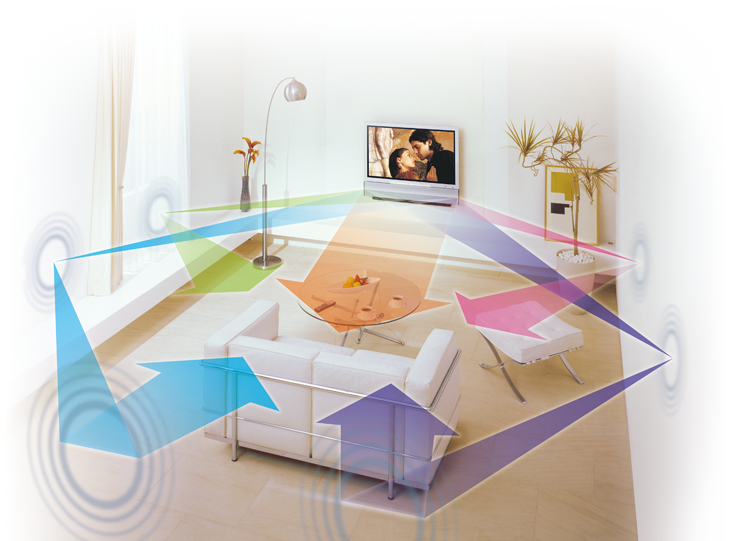
- Chapter 01
Commitment to the essence of “real”. - Chapter 02
The secret story of the YSP series development. - Chapter 03
The sound quality and realism achieved by the YSP series. - Chapter 04
An Evolutionary History of the YSP Series
- Product Information
- Top Page

